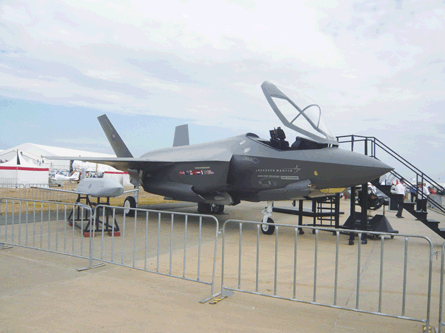Lockheed Martin is confident that it will be able to deliver Australia's first F-35 Joint Strike Fighter in 2013. But continuing worries about possible delays to the aircraft have resulted in Canberra keeping its options open about ordering additional Boeing F/A-18Fs to plug potential capability gaps.
"We expect to take delivery of the first F-35 in 2013 and a few more in 2014. We will be working to achieve initial operational clearance in 2015," Air Vice Marshal John Harvey, F-35 programme manager for the New Air Combat Capability at Australia's Defence Materiel Organisation. "The F-35 continues to make good progress, and the defence ministry and Australian industry are working closely with their international partners to make the programme a success."
Seeking to ally worries about delays, Tom Burbage, Lockheed's executive vice-president and general manager for F-35 programme integration, says that flight tests were on track. "The aircraft and its systems are proving to be significantly more mature at this stage of testing than those of past programmes. The programme is achieving established milestones and retiring technical risk according to plan."
 |
|---|
© Siva Govindasamy/Flight International |
Both Harvey and Burbage add that even if there is a fresh delay to the F-35, which has faced several setbacks since its inception, this will not affect Australia's procurement as the country is due to receive its first aircraft later in the production schedule. Canberra has already ordered 24 Boeing F/A-18Fs to plug a possible capability gap between the retirement of its General Dynamics F-111s and the introduction of the F-35s.
Gp Capt Steve Robertson, the head of Australia's Air Combat Transit Office, says that the country has not ruled ordering even more Super Hornets if there are further delays to the F-35. In addition, if Canberra converts 12 of the 24 F/A-18Fs into EA-18G Growlers as it has indicated it might, it may need to order additional Super Hornets to boost its strike capability regardless of the progress on the F-35.
"Additional Super Hornets may be necessary under a number of scenarios, but this has not been decided yet," says Robertson. "We have to wait for the Defence White Paper before we know where we are heading in this regard."
The White Paper will be the blueprint for Australia's future defence policy, setting out the government's plans for the size, capacity and shape for the next 20 years or more. This will include the Air Combat Capability Review, which looks at Australia's air combat requirements up to 2045. The first part of the review, looking at requirements up to 2015, was released last year and led to a government decision to stick with its predecessor's order for 24 F/A-18Fs to replace the F-111s.
Source: Flight International
















